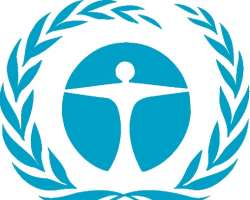UN Applauds China Efforts to Combat Illegal Ivory Trade / Six Tons of Ivory Destroyed at Landmark Event in China

NAIROBI, Kenya, January 6, 2014/African Press Organization (APO)/ -- Six tonnes of confiscated ivory were destroyed by the authorities in China, Monday, in an effort to combat the illegal trade in elephant tusks.
The seized ivory was fed into crushing machines in the southern city of Dongguan, in what was described as the first public destruction of ivory in China.
According to the Convention on the International Trade in Endangered Species of Fauna and Flora (CITES), elephant poaching in Africa could lead to local extinctions if the present killing rates continue.
The situation is particularly acute in Central Africa, where the estimated poaching rates are twice the continental average.
UN Under-Secretary General and Executive Director of the UN Environment Programme (UNEP) Achim Steiner said, “We congratulate China and the State Forestry Administration on this milestone event.”
“The largest remaining land mammal on the planet is facing one of the greatest crises to hit the species in decades. The latest CITES data estimates that some 47,000 animals were killed in Africa in 2011 and 2012.”
“Yet, there is reason for optimism. International cooperation is paving the way towards improved law enforcement and increased efforts to reduce demand. These efforts need to be stepped up and strengthened to produce the desired results.”
“We have also seen the destruction of ivory stockpiles across range, transit and demand states: in the Philippines, the Gabon, the US and China among others. As well as create critical public awareness, such actions send a clear message that wildlife crime will not be tolerated," he added.
Increased poaching and loss of habitats are decimating African elephant populations – especially in Central African countries – according to a report entitled Elephants in the Dust: The African Elephant Crisis, released last March.
The UN estimates that over 17,000 elephants were illegally killed in monitored sites in 2011 alone. Overall figures may be much higher.
Secretary-General of CITES John E. Scanlon, speaking at the event, said, “Despite considerable efforts to combat wildlife crime, it continues to be a problem worldwide. Illegal trade in elephant ivory is having a devastating impact on the African elephant, and it also poses a threat to people and their livelihoods – it must stop. China, and the entire international community, are determined to end this illicit trade."
The Elephants in the Dust report – produced by UNEP, CITES, the International Union for Conservation of Nature (IUCN), and the Wildlife Trade Monitoring Network (TRAFFIC) – says that the illegal ivory trade has tripled since 1998.
Criminal networks are responsible for the illegal trafficking of ivory between Africa and Asia. Large-scale seizures of ivory destined for Asia have more than doubled since 2009 and reached an all-time high in 2011.
The international community is looking at measures to address the crisis, including collaborative action to combat the illegal trade in wildlife and timber, which would include:
• Improved law-enforcement across the entire illegal ivory supply chain;
• Strengthened national legislative frameworks;
• Training of enforcement officers in the use of tracking, intelligence networks and innovative techniques, such as forensic analysis;
• Better international collaboration across range states, transit countries and consumer markets; and
• Action to fight collusive corruption, identifying syndicates and reducing demand.
Notes to Editors
• UNEP is strengthening and focusing its work to further assess global and regional environmental threats caused by the illegal trade in wildlife and timber, to provide policy advice on such threats, and to further catalyze and promote international cooperation and action to address the threats caused by the illegal trade in wildlife and timber. Such efforts build on four decades of UNEP's work in support of the conservation and sustainable use of wildlife and forest resources.
• A range of regional initiatives have also been developed and adopted. In Africa, the Lusaka Agreement on Co-operative Enforcement Operations Directed at Illegal Trade in Wild Fauna and Flora was adopted in 1994 to support member states and collaborating partners in reducing and ultimately eliminating illegal trade in wild fauna and flora.
• In other regions, Regional Wildlife Enforcement Groups/Networks have been developed (in North America, Europe, Southeast and South Asia, and the Middle East), which aim to facilitate cross-border cooperation among agencies involved in preventing and suppressing wildlife crime.
• Regional Forest Law Enforcement and Governance (FLEG) processes have also been initiated in South-East Asia, Africa, Europe, Latin America and North Asia. The FLEG processes provide soft legislation which aims to improve governance in the forest sector and to strengthen cooperation to address illegal logging and timber trade.
